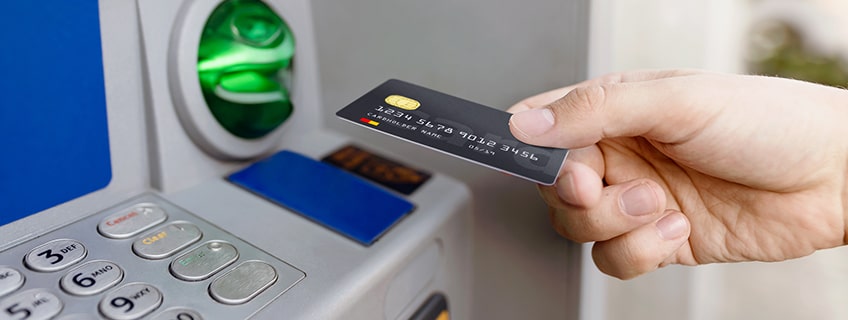
How ATMs Operate: A Detailed Overview
Posted on Monday, April 29th, 2024 | By IndusInd Bank
What does an ATM do?
Let us first understand the full form of ATM. ATM stands for Automated Teller Machine. It is a computerised device that acts as an electronic banking outlet, allowing customers of financial institutions to perform various transactions without the help of a human teller or branch representative. Anyone can use the ATM by inserting a debit card or credit card and entering its correct PIN.
The Evolution of ATMs Over Time
The first ATM is said to have appeared at a branch of Barclays Bank in London in 1967, although there are reports of a cash dispenser being used in Japan in the mid-1960s. By the 1970s, interbank communications allowed customers to use one bank’s card in another bank’s ATM. Within a few years, ATMs spread globally, becoming ubiquitous even on the tiniest of islands.
Different Types of ATMs
- ATMs perform basic functions such as allowing customers to withdraw cash and check savings account (or current account) balances.
- Then, there are advanced ATMs. These offer additional functions payments, transfers, accessing account information, and allocating a line of credit, mostly usable at the bank ATM where the customer holds a savings account (or current account).
Also Read: Building Saving Discipline with Online Savings Account
Elements of an ATM’s Design
The parts for all ATMs are usually the same:
- Card Reader: The card reader recognises the chip on the front of your card or the magnetic strip on the back.
- Keypad: The keypad lets users input information like your personal identification number, type of transaction and the amount.
- Cash Dispenser: The cash dispenser is the slot from where the money is dispensed, It is also connected to a safe at the bottom of the machine.
- Printer: The printer prints the receipt, which specifies the details of the amount withdrawn, account balance, time of withdrawal, etc.
- Screen: The screen is the ATM’s communication display. It shows the options for various transactions, guides the customer through different options, and displays the account balance.
- Advanced machines also have slots for cheque deposits or cash.
How does an ATM work?
Using an ATM is relatively simple: it recognises the magnetic strip or chip on your card, verifies your identity with a PIN, and prompts you through the transaction process. ATMs are typically located outside bank branches and in high-traffic areas like malls, grocery stores, and transportation hubs.
Understanding ATM Charges
The ATM fees typically include:
- Surcharge Fee: This fee is imposed by the ATM owner/operator for the convenience of using the ATM when you are not a bank customer.
- Foreign ATM Fee: Some banks charge customers a fee for using ATMs outside their network. This fee is in addition to the surcharge imposed by the ATM.
The total cost of using an ATM can vary depending on factors such as your bank’s policies, the ATM owner’s surcharge, and whether the ATM is located domestically or internationally.
Also Read: Can I withdraw money from my savings account at an ATM?
FAQs
1. How much can you withdraw from an ATM?
The maximum withdrawal limit varies based on bank policies, account type, and ATM cash availability.
2. How can you deposit at an ATM?
Simply insert your card, select “Deposit,” choose your account, insert cash or cheques, confirm the amount, and take your receipt.
ATMs have made the process of making bank transactions a lot simpler than in the pre-ATM days. While some ATMs only dispense cash, others offer a range of services, enhancing convenience for customers. However, it is important to understand ATM fees and functionalities to ensure cost-effective banking transactions.
Disclaimer: The information provided in this article is generic in nature and for informational purposes only. It is not a substitute for specific advice in your own circumstances. Hence, you are advised to consult your financial advisor before making any financial decision. IndusInd Bank Limited (IBL) does not influence the views of the author in any way. IBL and the author shall not be responsible for any direct/indirect loss or liability incurred by the reader for taking any financial decisions based on the contents and information.



 Offers
Offers Rates
Rates Debit Card Related
Debit Card Related Credit Card Related
Credit Card Related Manage Mandate(s)
Manage Mandate(s) Get Mini Statement
Get Mini Statement
 categories
categories Bloggers
Bloggers Blog collection
Blog collection Press Release
Press Release


